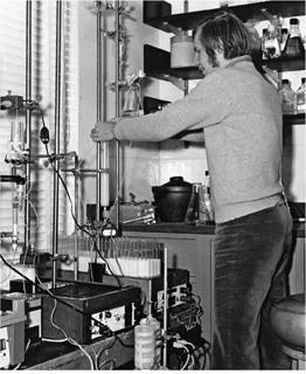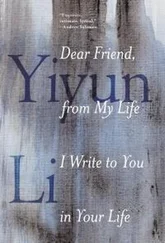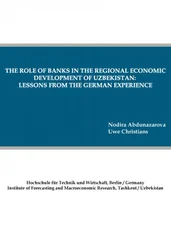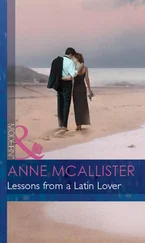James Watson - AVOID BORING PEOPLE - Lessons from a Life in Science
Здесь есть возможность читать онлайн «James Watson - AVOID BORING PEOPLE - Lessons from a Life in Science» весь текст электронной книги совершенно бесплатно (целиком полную версию без сокращений). В некоторых случаях можно слушать аудио, скачать через торрент в формате fb2 и присутствует краткое содержание. Жанр: Биографии и Мемуары. Описание произведения, (предисловие) а так же отзывы посетителей доступны на портале библиотеки ЛибКат.
- Название:AVOID BORING PEOPLE: Lessons from a Life in Science
- Автор:
- Жанр:
- Год:неизвестен
- ISBN:нет данных
- Рейтинг книги:5 / 5. Голосов: 1
-
Избранное:Добавить в избранное
- Отзывы:
-
Ваша оценка:
- 100
- 1
- 2
- 3
- 4
- 5
AVOID BORING PEOPLE: Lessons from a Life in Science: краткое содержание, описание и аннотация
Предлагаем к чтению аннотацию, описание, краткое содержание или предисловие (зависит от того, что написал сам автор книги «AVOID BORING PEOPLE: Lessons from a Life in Science»). Если вы не нашли необходимую информацию о книге — напишите в комментариях, мы постараемся отыскать её.
AVOID BORING PEOPLE: Lessons from a Life in Science — читать онлайн бесплатно полную книгу (весь текст) целиком
Ниже представлен текст книги, разбитый по страницам. Система сохранения места последней прочитанной страницы, позволяет с удобством читать онлайн бесплатно книгу «AVOID BORING PEOPLE: Lessons from a Life in Science», без необходимости каждый раз заново искать на чём Вы остановились. Поставьте закладку, и сможете в любой момент перейти на страницу, на которой закончили чтение.
Интервал:
Закладка:
No one in England, moreover, knew of the personal anguish attending his 1933 revelation in London that a nuclear disintegration releasing more neutrons than it consumed would unleash the great energy of the atom described by Einstein's famous E = me2 equation. If the technique for creating such fission events were to fall into the hands of the Nazis, allowing them to build atomic bombs, they would have all the power they needed to conquer the world. Secretly Leo assigned his patent to the British Admiralty, revealing it to close friends only after the uranium atom was experimentally split in Berlin in 1939. Until then Leo had incorrectly targeted first beryllium and then indium as elements likely to produce the necessary chain reaction.
Immediately Leo tried to stop his physicist friends outside the Third Reich from publishing more on uranium fission. But that cat was let out of the bag when, against Leo's advice, Frederic Joliot in Paris soon published his findings that uranium-235 fission generates two neutrons, not one. Leo then became obsessed with seeing that the United States moved ahead as fast as possible toward the construction of atomic weapons. It was he who first composed Einstein's famous fall 1939 letter to Franklin Roosevelt and, a year later, co-opted Enrico Fermi, the 1938 Italian Nobel Prize winner, by then a refugee at the Columbia University Physics Department, to work on uranium fission. Two years later, they moved from Columbia to the University of Chicago, where their nuclear reactor first went critical in early December 1942. Judged too independent to be part of any military-led team,
Leo, unlike Fermi, was kept from the subsequent bomb-making activities at Los Alamos by General Leslie Groves, then in charge of the Manhattan Project. But as soon as the first bombs went off, Leo worked incessantly to see that civilians—not the military—were in control of the Atomic Energy Commission.Now Leo had set his sights on cracking the genetic basis of life. After taking the 1947 phage course, he saw the need for frequent assemblies of bright people to inform him of new facts to chew on. That Bloomington weekend, however, provided no take-home lesson, either from my brief presentation on X-ray-killed phages or from Renato's much more sophisticated experiments on UV-inactivated phages. The most important new results presented, in fact, came from Szilard and Novick themselves. Over the past six months they had become convinced that despite Max Delbrück's very public reservations, Joshua Lederberg's 1946 demonstration of genetic recombination in E. coli was correct. Gleefully Leo wrote both Max Delbrück and Salva Luria that he would eat his hat if someone was able to disprove his and Aaron's new experiments. In fact, they were soon to find out that Lederberg had already published similar confirmatory data.
After Szilard and Novick went back to Chicago, Renato returned to experiments where he began seeing irreproducibility, a problem never before encountered in Luria's lab. Agar-coated plates expected to show statistically equivalent numbers of multiplying phages often yielded wildly disparate counts. Then, on a mid-November afternoon, he noticed the agar plates on the top of piles had more phage plaques. Plates lower in the piles, less exposed to the recently installed fluorescent lights, had fewer plaques. This observation was confirmed the next day, telling Renato that visible light reverses much UV damage, an effect soon called photoreactivation. Immediately I tested whether photoreactivation occurred with X-ray-damaged phages but was disappointed to discover only a small, possibly insignificant effect. Salva, then at Yale for a week of lectures, only learned of the light bombshell when Renato and I met him just before Thanksgiving at Szilard's second get-together at the University of Chicago. Immediately Salva feared that his past multiplicity reactivation results might have been badly compromised by inadvertent light exposure. But Renato put
his mind at ease, pointing out that Salva already had reproduced multiplicity reactivation under light conditions insufficient for photo-reactivation.In turn, Salva reminded Renato of a letter from Cold Spring Harbor, from Albert Keiner, which had arrived in Bloomington just before he left for Yale. In it Keiner excitedly told Luria of his discovery early in September that UV-killed bacteria and fungi could be resurrected by visible light. For many preceding months Keiner had also been plagued by ir reproducible results that he thought might be due to variations in the temperatures to which his UV-exposed bacterial cultures were exposed. Just after Dulbecco and I left Cold Spring Harbor, Keiner found that light, not temperature, was the uncontrolled variable messing up his experiments. Luria did not show Kelner's letter to Dulbecco, only casually mentioning the result to him, and Dulbecco made no connection to his own irreproducible results.
We were then all gathered in front of a blackboard in Szilard and Novick's lab, located in the former synagogue of an abandoned Jewish orphanage in a run-down neighborhood adjacent to the University of Chicago. As a physicist, Leo knew that visible light alone was unlikely to furnish sufficient energy to reverse UV damage. But he was intrigued to learn from Renato that visible light had no effect on free phages. It only worked after the damaged phages had entered their host bacteria cells. Immediately Leo began to speculate whether UV-induced mutations would also be reversed by visible light under such circumstances. To answer this question, he and Novick did experiments over the next six months that showed UV-created mutations were “cured” by visible light in the same proportions that visible light reactivated UV-killed bacteria.
Though I was also finding some of my “indirect effect” experiments difficult to reproduce, Chicago was not the place to say so. It was only just before Christmas that I realized that my IU X-rays were producing not only very short-lived free radical molecules but also much more stable peroxide-like intermediates that persisted after the X-ray machine was turned off. Not anticipating this, I had not been controlling the time from X-ray exposure that I did my assays for viable phages. My experiments continued, more confusing than enlightening,
until our next Szilard-inspired get-together in Bloomington, just prior to a meeting at Oak Ridge National Laboratory at which Luria and Delbrück were to speak.Initially Luria had wanted me to make a presentation as well, believing that my results indicated that what had been described as direct X-ray effects were actually caused not by ionizations directly breaking vital phage components but by the effects of reactive chemicals such as free radicals generated by X-rays within the phage particles. Szilard, however, sitting in the front row of our Bloomington gathering, unsentimentally tore that argument apart. He focused on my observation that purified phage particles suspended in nonprotective media lost their ability to kill bacteria every time they were inactivated. All too clearly I saw that I must do more experiments before I ventured again to speak even informally.
My bungled presentation was then followed by a slapstick exchange between Szilard and Novick. Novick was to present their seemingly paradoxical data produced following mixed infection of bacteria by the closely related phages T2 and T4. Sensing that no one followed Novick's argument, Szilard stood up to compound the confusion. Unlike me, however, they truly had something important to say in explaining results that had baffled Delbrück three years earlier. In the end Max had to clarify what they jointly failed to get across. Following mixed infection by T2 and T4, some progeny particles had the T2 genotype but the T4 phenotype, and vice versa. In fact, Leo and Aaron had pulled off some neat science. At the time, Max wrongly thought it elegant but not very important, and he urged Leo and Aaron not to publish their results. Only two years later did they write them up for Science.
Читать дальшеИнтервал:
Закладка:
Похожие книги на «AVOID BORING PEOPLE: Lessons from a Life in Science»
Представляем Вашему вниманию похожие книги на «AVOID BORING PEOPLE: Lessons from a Life in Science» списком для выбора. Мы отобрали схожую по названию и смыслу литературу в надежде предоставить читателям больше вариантов отыскать новые, интересные, ещё непрочитанные произведения.
Обсуждение, отзывы о книге «AVOID BORING PEOPLE: Lessons from a Life in Science» и просто собственные мнения читателей. Оставьте ваши комментарии, напишите, что Вы думаете о произведении, его смысле или главных героях. Укажите что конкретно понравилось, а что нет, и почему Вы так считаете.












